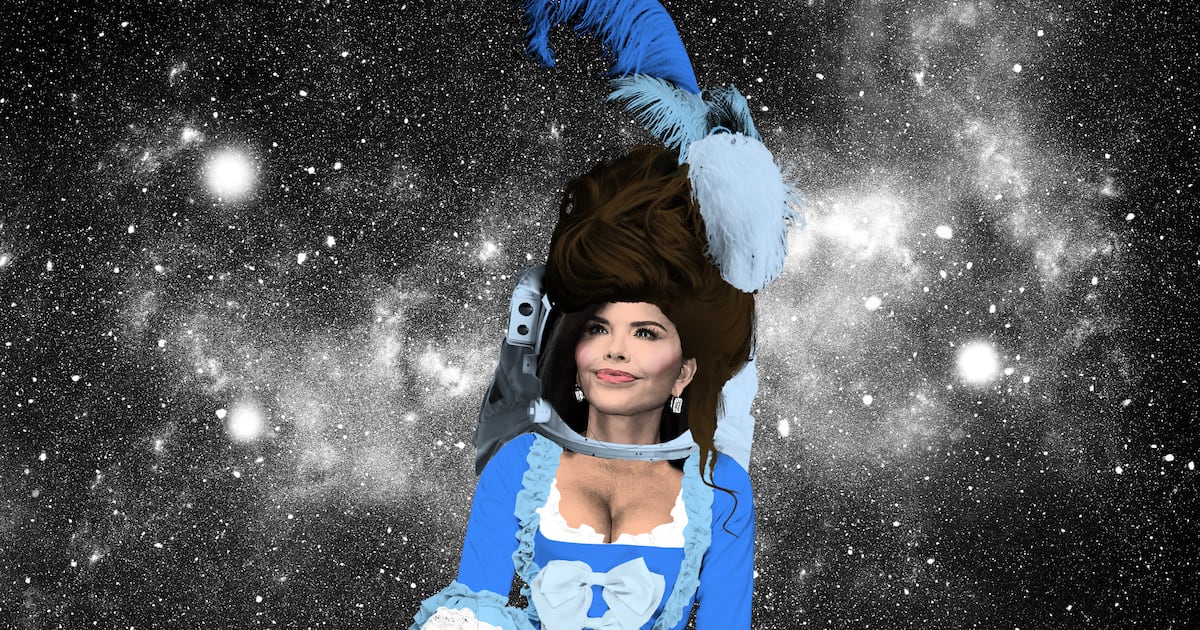
With the Twilight juggernaut returning to theaters this week, Duff McDonald crunches the numbers for movies, books, and television to determine the size of America’s vampire economy.
Vampires, a genre that never dies, literally and figuratively, have emerged as the entertainment industry’s favored elixir, with three main franchises pulling down some serious bucks— Twilight, True Blood, and the newest entry, Vampire Diaries.
With this week week’s release of The Twilight Saga: New Moon, we got to thinking: Just how big is this burgeoning vampire economy?
Before rolling up our sleeves, here’s a brief breakdown, for the uninitiated, of the undead’s Big Three:
Twilight is the Big Daddy of vampire brands, a billion-dollar plus phenomenon starring Robert Pattinson (the guy on the cover of Vanity Fair this month) and Kristen Stewart (the girl on the current cover of the New York Times’ Arts & Entertainment section). The series is PG-13, vampires for teenagers. It’s the young love fantasy, about the girl who doesn’t quite fit in who gets the guy who everyone else wants… who also happens to be a vampire.
Assuming that one in 20 people, say, are vampires every year for Halloween, that’s still $125 million in vampire costumes.
True Blood on HBO is the vampires for adults. Its saucy and sharp-tongued waitress heroine Sookie Stackhouse (played pitch perfect by Academy Award-winner Anna Paquin) is surrounded by vampire sex-and-violence as a sneaky backdoor into culture commentary, one whose characters utter the things we all think but never say. While Twilight has turned Pattinson into grist for teenage dreams, True Blood has adult women swooning over its two dominant vampires, Brit Stephen Moyer and Swede Alexander Skarsgard.
And then there’s the Vampire Diaries on The CW, the 90210 of the genre, the kind of show that has vampires wearing Uggs. With skinny girls with long hair and short skirts. In a place that’s disturbingly like Orange County.
Things have gotten so bloody out there that Bram Stoker’s great-grand nephew, Dacre Stoker, tried to get the family back in the game by releasing a sequel to the original Dracula this Halloween.
“I had no idea how many people are into vampires,” said Sam Trammel, who plays bar owner Sam Merlotte on HBO’s True Blood in an exclusive interview with The Daily Beast. “There’s a mania out there.” A mania indeed. What follows is our best estimate of what we’ll call the GVP, or Gross Vampire Product—the sheer amount of dollars chasing all that blood.
THE MOVIES As anyone who knows a female teen already knows, the Twilight movies, starring Brit heartthrob Pattinson and the already-jaded Stewart. The first installment of the series pulled in $380 million at the global box office and an additional $168 million in U.S. DVD sales. (The tally was high enough that the movie’s director, Catherine Hardwicke, landed a spot in the Guinness Book of World Records with the top-grossing movie by a female director.) Assuming that the November 20 release of The Twilight Saga: New Moon will have comparable results, Twilight is a $500 million-a-year movie franchise, as long as author Stephenie Meyer can keep pumping out books beyond the four she’s already written.
SUBTOTAL: $500 million a year
• Check out more stories, galleries, clips of New Moon. THE BOOKS Meyer has sold some 30 million copies of her books in hardcover and paperback in the U.S. Charlaine Harris is a distant second, with 6 million sold of the Sookie Stackhouse series on which True Blood is based. Between hardcover and paperback, call it a blended average of $12 per book sold, and these women have sold $432 million worth of books just between the two of them. Harris has set some records of her own: At one point this summer, her books held seven of the top-25 spots for mass-market fiction in The New York Times bestseller list. Throw in the modern perennials (everything Ann Rice wrote, the Buffy series) and the also-rans ( The Vampire Academy; Anita Blake, Vampire Hunter) and that’s an additional $25 million or more in sales. None of this has happened in a single year, mind you, so we’ll be conservative and call vampires a $100 million annual business for book publishers.
SUBTOTAL: $100 million a year
THE TV SHOWS HBO is notoriously tight-lipped about its finances, but this we do know: True Blood is the network’s most successful series since The Sopranos, reaching upward of 10 million viewers when you include DVR watchers. Throw in DVD sales for the series, and we’re talking about something in the realm of a $50 million-a-year take for creator Alan Ball’s second morbidly obsessed series. (His first was Six Feet Under.) While True Blood’s sex and violence make it R-rated, The CW’s Vampire Diaries is the Gossip Girl of the genre. It’s more than Gossip Girl, in fact: According to The CW’s Paul McGuire, with 4.3 million viewers, the show has the highest viewership on the network. It only debuted this fall, but we’ll call it a $20 million enterprise.
SUBTOTAL: $70 million a year
THE REST OF IT Here’s a shocker: According to the National Retail Federation, Halloween is now a $4.75 billion annual business in the United States. I don’t actually believe their estimate that people spend an average of $56 apiece on costumes, but let’s take them at just over half of their word and say it’s a $2.5 billion business. Assuming that one in 20 people, say, are vampires every year, that’s still $125 million in vampire costumes. Halve that again, just because the numbers seem so absurd, and vampires are worth $62.5 million each October.
Let’s not forget videogames. While you might assume Twilight series would be burning up the sales charts there as well, love clearly can’t trump shoot-em-ups. Other than the popular Buffy the Vampire Slayer brand, the most successful vampire-related videogames aren’t related to books or movies. The two most successful bloodsucking franchises of all time, according to Anita Frazier of the NPD Group, are the Castlevania and Legacy of Kain series, which have sold a lifetime total of 3.9 million and 1.7 million units, respectively. Of course, Castlevania has been around since the 1980s. Keeping that in mind, and throwing in sales of the other 30 or so vampire-related games, you can come to a conservative estimate of 500,000 or so games sold each year. Assume a $25 retail price (newer games sell for more, but the industry is a ferocious discounter), and vampire games are worth $12.5 million annually.
Lastly, there are the tabloids. While vampires are no Britney Spears when it comes to gossip coverage, the stars of Twilight have still graced the covers of People, US Weekly, OK!, Life & Style, and Star magazine a total of 39 times in the past year. Giving the vampires 25 percent credit for newsstand sales, that delivers a tally of $21.5 million in just a single year.
And while an average shot of Robert Pattinson, Kristen Stewart, or even Taylor Lautner doesn’t sell for much, Brandy Navarre, co-owner of the paparazzi agency X17, argues that a photo that confirms the are-they-or-aren’t-they romance of Pattinson and Stewart could be highly lucrative, particularly if it’s exclusive. Last week, X17 snapped shots of the two supposed lovebirds holding hands, which they sold for a total of $40,000—half to online outlets in the U.S., half to one magazine in Australia. Call the paparazzi a $5 million annual business.
SUBTOTAL: $101.5 million a year
THE BOTTOM LINE: The gross vampire product is a blood-curdling $771.5 million annually. A good amount below the GDP of the real Transylvania ($70 billion). But a whole lot more than the GDP of Twilight’s home, Forks, Washington ($126 million).
**With thanks to four vampire lovers: Julie Carter, Miriam Datskovsky, Caroline McDonald and Alison Twiner.
Duff McDonald is a contributing editor at New York magazine and a former contributing editor at Condé Nast Portfolio. His book, Last Man Standing, about Jamie Dimon, chairman and CEO of JPMorgan Chase, was published by Simon & Schuster in October.





